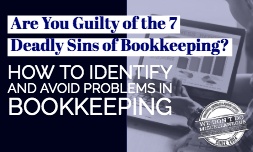As the new year approaches, businesses begin the critical process of financial planning. But a budget is more than just a spreadsheet of numbers; it is a roadmap for your company's future. When your budget is disconnected from your long-term strategic goals, you risk spending resources on activities that don’t move your business forward. Aligning your 2026 budget with your strategic goals ensures every dollar you spend is an investment in your vision.
This alignment transforms your budget from a simple accounting exercise into a powerful strategic tool. It provides clarity, enhances accountability, and positions your organization for sustainable growth. By making sure your financial plan directly supports your core objectives, you can navigate challenges more effectively and seize opportunities with confidence.
Why Your Budget Must Reflect Your Strategy
Think of your strategic plan as your destination and your budget as the fuel to get you there. If you allocate fuel to detours and side trips, you might never reach your intended goal. Misalignment between spending and strategy can lead to wasted resources, missed opportunities, and a team that is unclear on its priorities.
When your budget and strategy are in sync, you gain several key advantages:
- Focused Resource Allocation: You can direct funds toward projects and initiatives that offer the highest return on investment and contribute directly to your long-term objectives.
- Improved Decision-Making: A strategically-aligned budget provides a clear framework for making tough financial decisions. When a new spending request comes in, you can ask, "Does this support our strategic goals?"
- Enhanced Team Cohesion: When everyone understands how their department's budget contributes to the company's larger vision, it fosters a sense of shared purpose and encourages cross-departmental collaboration.
Actionable Tips for Strategic Budgeting
Creating a budget that truly reflects your priorities doesn't have to be complicated. Here are a few actionable tips to guide your 2026 planning process.
1. Revisit Your Strategic Goals First
Before you even open a spreadsheet, take a step back and review your company's strategic goals for 2026 and beyond. Are they still relevant? Are they clear and measurable? Your entire leadership team should be in agreement on these objectives. This foundation is essential for building a budget that makes sense. Your goals might include things like expanding into a new market, launching a new product line, or improving customer retention by a certain percentage.
2. Translate Goals into Financial Needs
Once your goals are crystal clear, work with department heads to translate them into specific initiatives and financial requirements. If a goal is to increase market share, what does that look like in practice? It might require a larger marketing budget for new campaigns, funds for hiring additional sales staff, or investment in product development. By breaking down big goals into tangible actions, you can accurately estimate the resources needed.
3. Prioritize Ruthlessly
Most businesses have limited resources, which makes prioritization essential. Not every initiative can be fully funded. Use your strategic goals as the primary filter for making tough choices. Rank potential projects and expenditures based on their expected impact on your core objectives. This helps ensure that your most critical strategic priorities receive the funding they need to succeed, while less important "nice-to-have" items are pushed to a lower priority or postponed.
4. Build in Flexibility
The business landscape can change quickly. A rigid budget can hinder your ability to adapt to unexpected challenges or capitalize on new opportunities. Build contingency funds or flexible spending categories into your 2026 budget. This allows you to reallocate resources as needed throughout the year without derailing your entire financial plan. A common approach is to set aside a small percentage of total revenue (e.g., 3-5%) for unforeseen circumstances.
5. Monitor and Adjust Regularly
Your budget should not be a "set it and forget it" document. Schedule regular check-ins—monthly or quarterly—to review your spending against your budget and your progress toward your strategic goals. These reviews allow you to identify variances early, understand why they are happening, and make necessary adjustments. This iterative process keeps your financial plan relevant and effective all year long.
Start Your 2026 Planning Now
A well-aligned budget is one of the most powerful tools you have for achieving your business objectives. By treating your budget as a strategic document, you ensure that your financial resources are actively working to build the future you envision for your company.
Don't wait until the last minute. The process of aligning your budget with your strategy takes time, collaboration, and careful thought. Start your 2026 budget planning early to give your team the space to create a thoughtful, strategic, and powerful financial plan. Your future self will thank you.














